Amidst the fading light the bursts of gunfire and piles of the dead and dying a young man lay dying. Or at least he thought he was dying amidst the wreck of humanity with nearly sixty thousand warriors slain around him. The field of Panipat in early 1761 was stained red with the blood of Marathas and Afghans locked in a fatal and bloody embrace only broken after the last of many charges of Sadashiv Bhau on the numerically stronger enemy.
On the fatal battlefield Mahadji Sindhia lay wounded. His brothers were dead in the service of their people and pursuit of the dream of Hindu Padshahi as envisioned by Shivaji the Great. After seven hundred years of endless warfare the rise of the Maratha peoples had decisively tilted the balance of power between the Hindus and Muslims on the Indian subcontinent. Overreaching ambition however led to the disaster at Panipat but from that dark day the wounded and mangled body of Mahadji Sindhia was dragged from the heaps of the slain to freedom.
His father Ranoji Sindhia had been one of the cavalry leaders of the all conquering Maratha hero Baji Rao as he subdued most of North India. An early start at the age of 10 in the company of his brothers and father on their yearly forays swiftly displayed his aptitude on the campaign trail and ability to mould with the swift and tireless Maratha army. From the deep South of India to the invasion of Punjab in 1757.Mahadji Sindhia at an early age learnt the modes of warfare of Mughal, Afghan, North Indian and Europeans. He watched the irresistible waves of horsemen humble the once mighty Mughals and destroy the pride of the Pathans. But from the field of Panipat the dreams of empire were laid low to a point where none believed they could rise again.
A slow recovery from his wounds led to his elevation to the head of the Sindhia clan and his valour in helping defeat Tipu Sultan exalted his status. The shaky recovery of the Marathas was sealed by their decisive defeat of the Nizam Ali and thoughts of revenge now occupied their minds.
The treacherous leaders of the Indian Afghans was Najib Khan who under the tutelage of Ahmed Shah Abdali had dominated the remnants of the Mughal Empire in North India for the decade after the Battle of Panipat. They had been held at bay only by the valour of Suraj Mal leading the clans of Hindu tribesman known as the Jats in the Mathura region and the arms of the Rajput kingdoms in the deserts of Thar.
But now a new Maratha army was marching again to North India in 1769 to complete their uncompleted mission and amongst them marched Mahadji Sindhia. After a bitter battle before the gates of the Red Fort of Delhi the Afghans fled leaving the Mughals to face the Marathas alone.
Frantic efforts to collect a pan Islamic alliance to defeat the Hindus resulted in a heavy defeat within a short span of time for the Afghans as they were driven from Delhi northwards to Rohilkhand. There following the death of Najinb Khan vengeance caught up with the Afghans as his tomb was torn open in contempt and his bones thrown into a blazing fire. His grandson Ghulam Qadir however escaped. Back in Delhi the Mughal emperor Shah Alam in quivering fear allowed Mahadji Sindhia to become the defacto ruler of the remnants of the Mughal Empire ruled in the name of the Maratha Peshwa.
This was a historical moment which sent a ripple of pride throughout the Maratha Empire a culmination of their century old struggle against the Mughals and foreign domination and an apt succession to the vision of the great Emperor Shivaji. It was also a timely reply to the efforts of the last Muhammadan marauder to test the borders of ancient India – the Afghans, as their dreams of an Indian Empire fell into the dust.
A new enemy however was hovering on the horizon to dim the tide of successes. As the millennia old struggle seemed to have tipped irretrievably towards the Hindus in the rise of the Maratha Empire , the independence of the Rajputs, the rise of the Jats and Bundela kingdom and the rise of the Ahom peoples of eastern India a new threat was rising
The encroachments of European predatory civilisation was steadily overwhelming all indigenous cultures of the world. The regional powers of the erstwhile Mughal Empire was falling one by one to the Hindu resurgence from the end of the 17th Century onwards as the tides of history began turning against them.
Modern trained British forces was already on the subcontinent backing the nefarious tactics of the East India Company and following the devastating raids on Bengal by the Maratha cavalry from the 1740’s onwards the Nawabs of Bengal clung to British protection to save them. The British however continued to pay the yearly tribute from Bengal to the Maratha Empire until the disaster of Panipat. Thereafter the Marathas were locked into a battle for survival and then revival. The intervening decade saw the British establish their stranglehold over Bengal and began the economic rape and devastation of that province.
The attacks of the Marathas and Jats on the province of Awadh under led their Nawab to cling to British protection in 1772 and gave them the opportunity to meddle in Indian affairs. Very soon apart from Mysore virtually all the remaining Muslim states made alliances with the Europeans to preserve themselves against their Hindu adversaries.
The same year saw the death of the head of the Maratha Empire, Madhav Rao and an ensuing struggle for control in which the British saw the chance to push their feet into India. A large and well equipped British forces began to advance towards Pune, the capital of the Empire to be faced by Mahadji Sindhia.
A furious campaign saw the lands before the marching British fired and waves of Marathas cavalry harrying and attacking the British in endless attacks day and night. Eventually desperate with their supplies breaking the British began to retreat to be caught in a pincer movement at Wadgaon and beaten to utter exhaustion. The British force surrendered and signed a treaty of peace with the Marathas in a humiliating loss witnessed by the entire Indian spectrum. The Punic bad faith of the British however allowed them to repudiate the treaty as soon as they could and the war continued for another 7 years. Despite the calling of further troops and resources from across the Empire the British East India Company was eventually unable to continue the struggle and made peace in 1782.
The main architect of the war and peace was Mahadji Sindhia whose stature now rose above all others. He immediately set march for Delhi again and swept aside the pretensions of independence that the Mughals had started reasserting. The man of faith and action had now become the most powerful man in India holding the Mughals, Afghans and British at bay. He swiftly began to match the Maratha cavalry with a formidable Europeanised infantry units and in the north an alliance with the Hindu Jat tribes of Bharatpur. The empire now starched to the Sutlej river in Punjab with virtually all states being directly or indirectly under their control
This however led to deep resentment amongst the Muslim princes of India, They had either clung to the British for protection or were fleeing across the land in search of protection. Tens and thousands of leaderless Muslims soldiers were sitting idle after the breakup of their states. The leadership of the Afghans was taken up by Ghulam Qadir and that of the Mughal soldiers Ismail Beg. In 1788 whilst Sindhia was in Rajasthan the two warlords gathered their troops to them and raised the banner of revolt. Swarms of Muhamadan soldiers, to whom the domination of the Hindus was intolerable, gathered to them and very soon vast forces were arrayed against Sindhia in the North of India. Delhi itself was taken by Ismail Beg and Ghulam Qadir as the banner of Jihad was raised to unite the confederates.
Sindhia situation was become desperate at the British were also now pressing the frontiers eager to take revenges for their previous humiliations and the spectre of the Panipat campaign began to haunt the Marathas. However with a series of masterful strokes Mahadji combined the waves of Maratha horsemen with the Europeanised Campoo regiments whilst stocking the forts and castles with the sturdy Hindu Jat warriors.
The forts of Agra and Mathura were stormed in a series of bloody battles and the fleeing Muslim coalition fled to Delhi for protection. Here Sindhia caught up with them an enforced a siege on the city. Inside the situation was become increasingly desperate. The calls of the faithful to resist the infidel were beginning to fail and the Emperor Shah Alams heart failed him. Infighting erupted between the Mughals and Afghans and in fury the Afghans cut out the eyes of the Emperor and dishonoured his family only being stopped from murdering the entire royal family by Maniyar Singh a Rajput warrior.
Sindhia took the opportunity to attack the city and after a furious struggle in which fighting erupted from outer walls to the Red Fort he broke the defences. Thousands of Afghans were stripped and dragged through the streets reviled by the city folk who they had tormented. The Mughals fled in utter defeat whilst Ghulam Qadir was captured. The blind Mughal Emperor begged Sindhia for deliverance with the break up of the Muslim alliance.
Indeed it proved the last Islamic enterprise to rule India. The unbroken resistance of the Hindu clans throughout the medieval period had prevented the Turks and Mughals alike from creating little more than armed settlements in the plains of India. Vast tracts remained under the control of Hindu states and warlords which by the close of the 1600’s had lead to huge uprisings which first shook and them brought tumbling down the corrupt edifence of the Mughals. And now a hundred years later the last vestiges of empire combined in a last alliance to break the millennia old resistance of the Hindus to end in utter defeat. Ismail Beg became a wanderer with a handful of followers whilst Ghulam Qadir lay in prison and then to gratify the vengeance of the blinded Shah Alam Sindhia ordered the Afghan prince to be dragged through the streets of Delhi for execution and his dead body to be hung from a tree.
By 1792 Sindhias triumph was complete. His hold over the Maratha Empire in the name of the Peshwa was sealed and defacto over the nominal empire of the Mughals. His name and fame had brought the once proud Mughals and Afghans to their knees and humbled the power of the otherwise victorious British Empire. As a colossus he strode over the plains of Northern India with the inspirational cavalry tactics of his noble predecessor Shivaji the Great combining it with the new model of Europeanised infantry, the campoo regiments. Factories for armaments had been established and the economic stability after decades of warfare was now ensured. The remaining Muslims states, barring that of Tipu Sultan only survived due to the protection and economic pillaging of the British who in their turn shied away from confronting the mighty Sindhia.
His calm nature amidst the turmoil’s of the age stood in stark contrast to his adversaries. His devotion to his spiritual Guru and an unshakeable faith enabled him to deal with confront and defeat the most implacable enemies. His understanding of the political and historical landscape enabled him to complete the military defeat of the remaining Muhamadan powers in the Indian subcontinent and establish a system capable of taking on the European encroachments.
His death in 1795 at a relatively young age changed the political landscape but his contribution is not forgotten or can it be underestimated. He showed that the combination of indigenous innovation and value could not only compete with but emerge victorious over a millennia of genocidal attacks and the tidal wave of monolithic globalisation.
(7552)
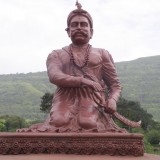
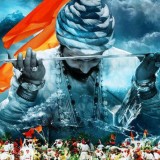
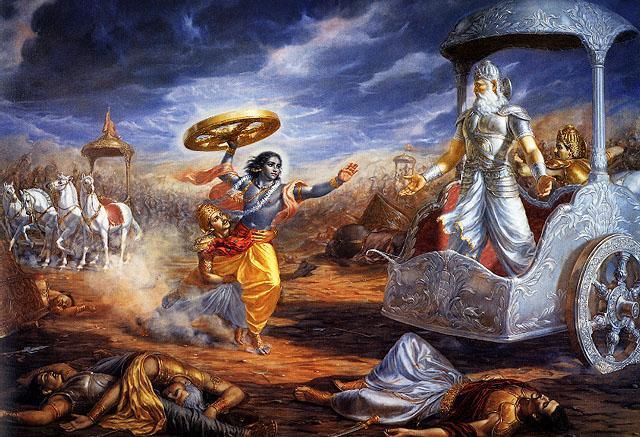 However some thoughts rankled in my mind. If the Hindus were truly slaves for a thousand years plus, then how have we survived to this day with dignity and honour and with a spiritual tradition stretching back to the mists of time and beyond? Many other cultures, civilisations and spiritual traditions have been reduced to museum pieces, but the words of the Holy Vedas are recited in an identical fashion today as they were thousands of years ago when first revealed to the Rishis.
However some thoughts rankled in my mind. If the Hindus were truly slaves for a thousand years plus, then how have we survived to this day with dignity and honour and with a spiritual tradition stretching back to the mists of time and beyond? Many other cultures, civilisations and spiritual traditions have been reduced to museum pieces, but the words of the Holy Vedas are recited in an identical fashion today as they were thousands of years ago when first revealed to the Rishis. Following the death of their founder, Muhammad we see the Arab Khilafat expand swiftly over the Middle and Near East, pouring over the deserts of North Africa and crossing the waters to begin a six century occupation of Spain and beyond. The combined might of Christian Europe struggled again and again to reclaim the ‘holy lands’ to end in bitter failure with the rise of the Ottoman Empire, who ruled over a large part of Eastern Europe for centuries.
Following the death of their founder, Muhammad we see the Arab Khilafat expand swiftly over the Middle and Near East, pouring over the deserts of North Africa and crossing the waters to begin a six century occupation of Spain and beyond. The combined might of Christian Europe struggled again and again to reclaim the ‘holy lands’ to end in bitter failure with the rise of the Ottoman Empire, who ruled over a large part of Eastern Europe for centuries. Two further centuries passed as further advances were resisted until a breakthrough around 1200 CE allowed the invaders access to the North Indian plains. The remaining Buddhists were slaughtered or converted in an unprecedented orgy of violence and horror. The majority Buddhist regions of Afghanistan, Kashmir and West Punjab joined the crescent banner of Islam. However the conversion of Hindus was slower and the resistance was more fierce. Hindu warrior clans kept up a relentless resistance fighting from the deserts, the mountains and the forests. The heavy cavalry of the Muslim Turks which had proved fatal to the Crusaders of Western Europe were victorious on the plains of North India but this did not prevent an endless cycle of attack and counter attack by the Hindus.
Two further centuries passed as further advances were resisted until a breakthrough around 1200 CE allowed the invaders access to the North Indian plains. The remaining Buddhists were slaughtered or converted in an unprecedented orgy of violence and horror. The majority Buddhist regions of Afghanistan, Kashmir and West Punjab joined the crescent banner of Islam. However the conversion of Hindus was slower and the resistance was more fierce. Hindu warrior clans kept up a relentless resistance fighting from the deserts, the mountains and the forests. The heavy cavalry of the Muslim Turks which had proved fatal to the Crusaders of Western Europe were victorious on the plains of North India but this did not prevent an endless cycle of attack and counter attack by the Hindus. The religious traditions of India had been severely mauled by the endless bloodletting over the past two centuries. Many important institutions and temples were destroyed. Prosperity suffered, as it tends to in times of continuous war. This created a certain weakening of Hindu society. Religion became preserved in rituals which were less and less understood. Sanskrit learning was on the decline. Caste became more rigid.
The religious traditions of India had been severely mauled by the endless bloodletting over the past two centuries. Many important institutions and temples were destroyed. Prosperity suffered, as it tends to in times of continuous war. This created a certain weakening of Hindu society. Religion became preserved in rituals which were less and less understood. Sanskrit learning was on the decline. Caste became more rigid.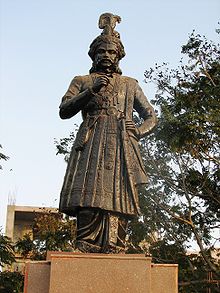 Other larger organised resistance emerged in the Vijaynagara Empire of South India around 1336 CE which consolidated Hindu resistance for over two centuries. In the north the revival of the Rajput kingdoms and the defiance of kings like those of Orissa under the Gajapati Kings, the hills of Punjab under Jasrath Khokhar and the rise of neo Hindu kingdoms in the north east of India along with the entire hill region signaled the revival of Hindu rule over vast tracts of India.
Other larger organised resistance emerged in the Vijaynagara Empire of South India around 1336 CE which consolidated Hindu resistance for over two centuries. In the north the revival of the Rajput kingdoms and the defiance of kings like those of Orissa under the Gajapati Kings, the hills of Punjab under Jasrath Khokhar and the rise of neo Hindu kingdoms in the north east of India along with the entire hill region signaled the revival of Hindu rule over vast tracts of India.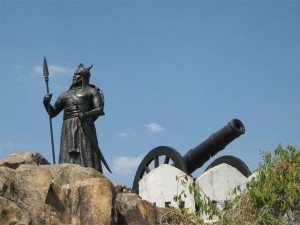 He instead moved away from the tenets of Islam to a new faith of the Din i Ilahi. By following the age old traditions of religious toleration in India he endeared himself to the majority population and through a period of compromise and alliance brought a brief period of peace to the troubled land.
He instead moved away from the tenets of Islam to a new faith of the Din i Ilahi. By following the age old traditions of religious toleration in India he endeared himself to the majority population and through a period of compromise and alliance brought a brief period of peace to the troubled land. The march of western civilisation ended the Hindu revival at a time when Hindus exercised control over almost the entire subcontinent. But it took Three wars with the Marathas, two wars with the Gurkhas, war with the Jaats, also smaller ranging wars with the Santhals, Sanyasis and many others .
The march of western civilisation ended the Hindu revival at a time when Hindus exercised control over almost the entire subcontinent. But it took Three wars with the Marathas, two wars with the Gurkhas, war with the Jaats, also smaller ranging wars with the Santhals, Sanyasis and many others . However the theories propagated by the British found challengers from the Hindus. Spurred by a revaluation of their history and the knowledge of western theories a new revival began to take fruit. From the universal preaching of Swami Vivekananda to the guns of the Anushilan Samiti the Hindus were at the forefront of a growing anti colonial challenge to the most powerful empire in the world. Finally finding control of the subcontinent untenable in the teeth of endless opposition the British Indian Empire collapsed in a wave of unprecedented bloodshed which has seen a slow and steady spread and reach of the Hindu world.
However the theories propagated by the British found challengers from the Hindus. Spurred by a revaluation of their history and the knowledge of western theories a new revival began to take fruit. From the universal preaching of Swami Vivekananda to the guns of the Anushilan Samiti the Hindus were at the forefront of a growing anti colonial challenge to the most powerful empire in the world. Finally finding control of the subcontinent untenable in the teeth of endless opposition the British Indian Empire collapsed in a wave of unprecedented bloodshed which has seen a slow and steady spread and reach of the Hindu world. Attack after attack was defeated. Horrific massacres did not force the people to abandon their religion and identity. The destruction of holy places did not see dharma die but rise again and overcome their opponents with the power of truth. The banner of freedom was raised generation after generation despite the best attempts of some vested parties to blur the truths and sacrifices made again and again.
Attack after attack was defeated. Horrific massacres did not force the people to abandon their religion and identity. The destruction of holy places did not see dharma die but rise again and overcome their opponents with the power of truth. The banner of freedom was raised generation after generation despite the best attempts of some vested parties to blur the truths and sacrifices made again and again.